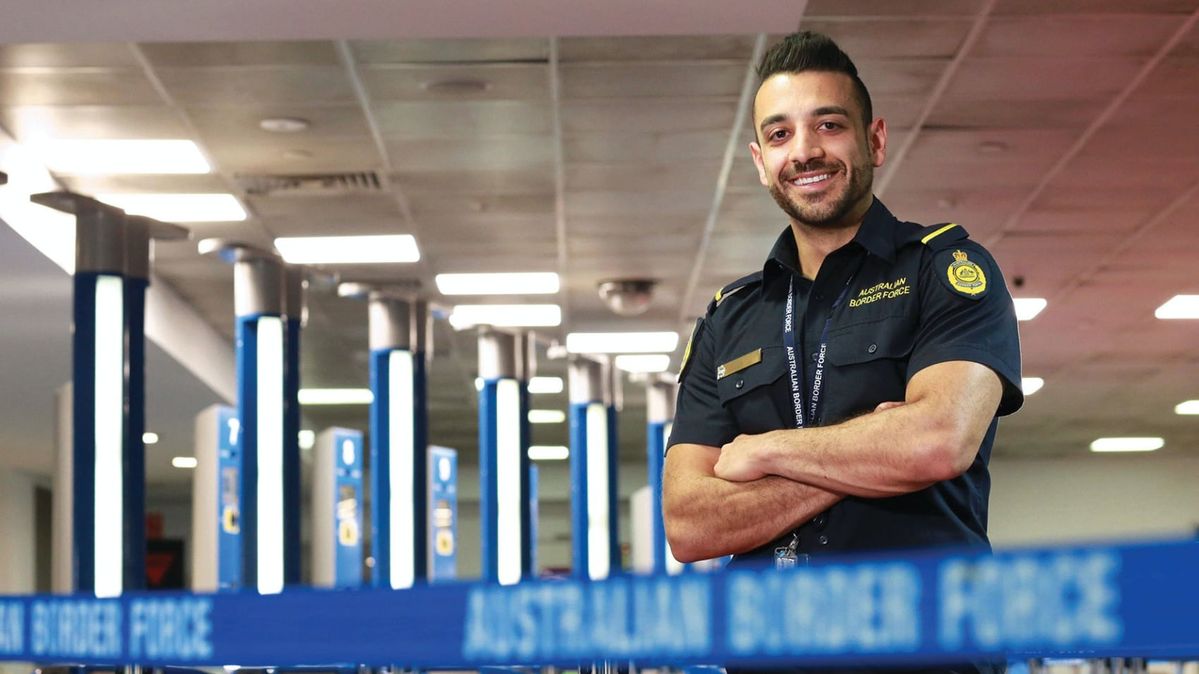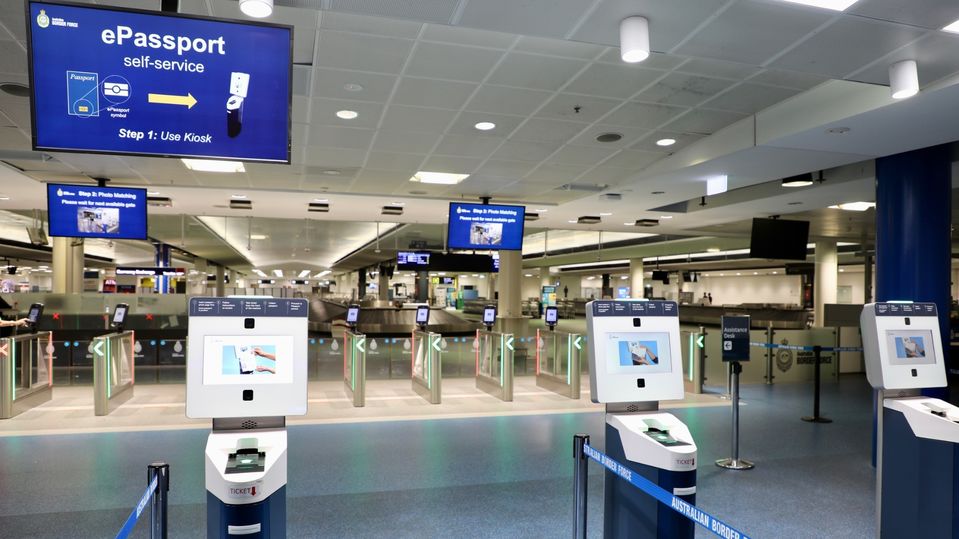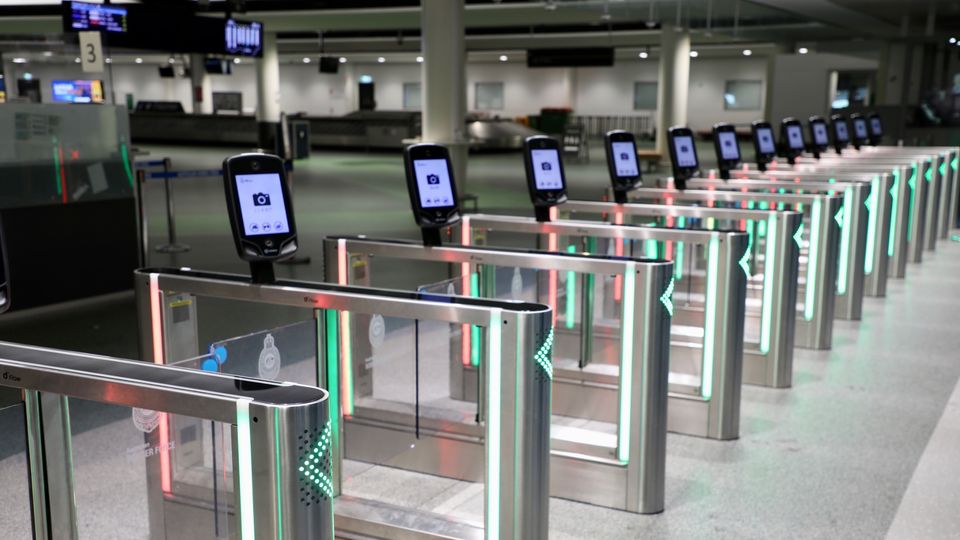Sydney Airport upgrades SmartGate passport lanes
Those automated SmartGates are about to get smarter, and faster too...

More international travellers will be able to use the automated SmartGate system on arrival at Sydney, following an upgrade to ‘Generation 3’ technology for the touch-and-go passport lanes.
Already underway, the overhaul is expected to be completed by the middle of 2024, an Australian Border Force spokesperson tells Executive Traveller.
“Enhanced biometric capability used in the Gen 3 SmartGates allows a greater number of international travellers to use the self-service process,” the spokesperson added.

The same refit is also taking place in Adelaide, where it’s on target to be completed by March; Brisbane, Gold Coast, Darwin, Perth, Melbourne and Cairns have already moved to the Gen 3 tech.
Australia’s SmartGate system actually encompasses two physically seperate but digitally-connected components – the automated passport gates themselves, and the kiosks which issue a gate ‘ticket’ to inbound travellers.
The SmartGate Gen 3 upgrade provides an improved experience for travellers entering Australia, says the ABF, including a shorter ‘cycle time’ for travellers at the the kiosk and gate to boost overall capacity, plus “a dedicated accessible self-service kiosk for wheelchair users and people of short stature.”
Throughout the upgrade, travellers “can continue to use the kiosks and SmartGates for self-processing, but at a reduced capacity.”
The ABF says additional officers have been rostered at Sydney and Adelaide international arrivals “to assist during this time to ensure any delays as a result of the rollout are minimised.”
As previously reported, Australian passports can also be used to skip the queues at Hong Kong Airport’s time-saving automated e-Channel lanes – at least it helps get better value from your Aussie passport, the cost of which will soar to almost $400 this year.

22 May 2011
Total posts 89
Let’s hope they also fix the flow - batches of machines with heaps of queues, then a messy approach to the actual gates but with machines available - and then officers being paid to stand there and literally direct traffic - way more convoluted that it needs to be.
07 Jan 2014
Total posts 42
Wow "upgrading" to keep the same 2 stop system of kiosk + gate when literally every other country with e-gates use a one-stop gate. Great work Australia.
30 Apr 2013
Total posts 13
For anyone who has been through MEL arrivals recently would see this is not quicker at all. My recent arrivals have been a so chock full of people waiting to use the kiosk. Mine didn’t even work after 3 attempts. Then joined the 45 minute queue to be manually processed.
21 Dec 2012
Total posts 41
will they actually have more e-gates available at each arrivals side in SYD, or will we just have more people using the same number of gates?
the 2 step process in Sydney seems just because they can't/won't fit in more gates in the current arrangements so they have to split it up into 2 stages, it isn't a security enhancement or anything of the sort. If gates were in a V shape or similar, we could actually have more gates in the same amount of space.
While experienced SYD users might know which machines will tend to be where, and which ones unused, it is a pretty confusing system for unfamiliar arrivals - especially when so many overseas e-gates are "all in one" (just like our departure gates).
I'm sure it is great upgrade revenue for someone and their consultants though.
06 Aug 2014
Total posts 3
As long as the system involves 2 steps (kiosk +gate ) please don’t bother reporting it because it’s not news. An upgrade is making it a 1 step processing egate like many other countries. I don’t know why Australia boarder security thinks we are so special
Qantas - Qantas Frequent Flyer
18 Jan 2017
Total posts 22
The two step is to satisfy customs. The first one is what you give at customs along your declaration.
What a waste of resources...
25 Jun 2018
Total posts 45
Came through SYD a couple of months ago, an absolute disgrace. Confusing signage to (try to) separate Australian passport holders from ‘the rest’. No ‘lanes’ to direct passengers towards machines in order of arrival and no signs to indicate how to operate the gates which were not working properly; some were intermittent and some not at all. Border control staff were trying to get the machines working but didn’t manage to, so we were ‘directed’ towards the staffed booths. Their machines weren’t working properly either so the officers just looked at our passport photographs, then at us and waived us through. Not really sure whether we ‘entered’ Australia or if we are still overseas.
Let’s hope that the ‘upgrade’ is fully tested before half a dozen overseas flights arrive at the same time and chaos reigns once more.
18 May 2022
Total posts 2
The 2-step arrival process is so third-world. Even New Zealand has a way more advanced one-step e-gate arrival process.
15 Feb 2014
Total posts 11
Sydney remains the international airport I least like having to pass through on arrival, anywhere in the world. The experience is almost always stressful, slow and frustrating. I can't see how this 'improvement' will help passengers.
04 Sep 2019
Total posts 55
Time to get with the times and have travellers fill out the orange international card prior to boarding the plane via and app or webportal
06 Mar 2015
Total posts 2
I also came through SYD a couple of months ago, an absolute disgrace. Confusing and inaccurate and missing signage to (try to) separate Australian passport holders from ‘the rest’. No ‘lanes’ to direct passengers towards machines in order of arrival and no signs to indicate how to operate the gates or why one of the items is needed (i.e. quarantine). Really, really hopeless.
20 Nov 2015
Total posts 435
Yes, this whole two-stage system of a kiosk AND a gate doesn't seem to make sense. If it's for quarantine when why does New Zealand not have the same setup?
The actual process of directing people through the terminal is a mess as well. Every time I arrive at Sydney there's a bunch of ABF staff yelling directions to people to try and sort them into the right area. Surely there are better ways to handle this? Maybe a video clip on the inbound flight to explain the process to arriving travellers?
The other thing I have been lately is that they are trying to reserve the kiosks right at the end of the terminal, the ones just in front of the smartgates themselves, for cabin crew. There's no signage, just an ABF person standing in the lead-up to this area asking if you have your kiosk card and if you can't show it, they turn you around and send to the kiosk machines off to the right, which are always crowded, instead of letting you walk through and sensibly use the kiosks in front of the gates. I just smile and say "Yep!" while waving my passport holder and keep on walking past them, use one of the kiosks right in front of the smartgate and go through.
Hi Guest, join in the discussion on Sydney Airport upgrades SmartGate passport lanes